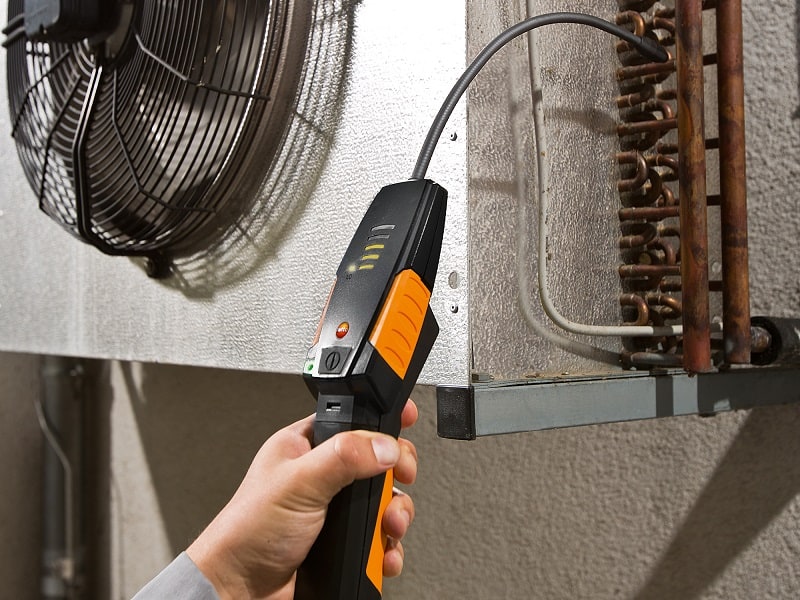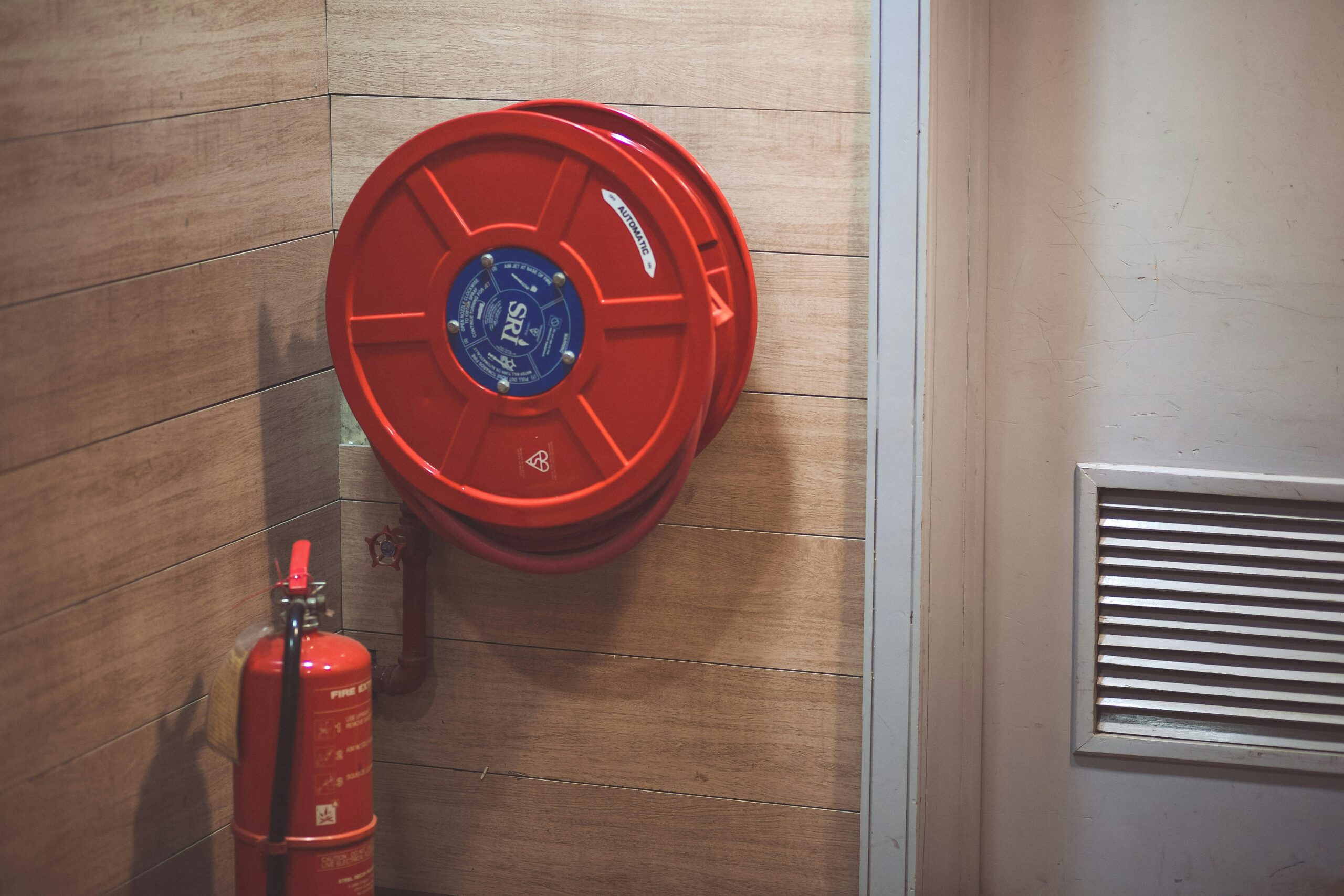
Trakref
Calculating Refrigerant Leak Rates - And Why it Matters

Ask yourself: What if you were required to calculate the leak rate of your HVAC/R appliance every time someone worked on it? Would you know what to do? Have you ever done it?
With more than 600 Million LBS of refrigerant added to systems each year, and the average transfer of 30 LBS per transaction, that means that 20 Million HVAC/R maintenance transactions need to record the leak rate.
If you are not calculating leak rates every time, you are not alone, most people don’t. Each year Trakref reviews more than 100K service tickets for documentation and less than 3% include the leak rate calculation.
With increased pressure from the SEC on reporting emissions and leak rates accurately, it is now more important than ever to properly estimate the leak rates of your units for compliance. Here are a few pointers to make sure you are on the right track when it comes to understanding why HVAC refrigerant leak tracking is so important and how to do it the right way.
Start with an accurate refrigerant charge in HVAC and other cooling equipment
Inaccurate calculation of the refrigerant charge can spell doom for leak calculations, no matter how accurate you are with your leak rate math. Consider this: if you underreport the weight of refrigerant in an HVAC unit, and it leaks, the leak rate will look even larger because of the assumed additional loss of refrigerant due to insufficient initial charge.
For example, if you have a 10-ton unit that leaks 5 pounds of refrigerant, compare its leak rates for accurate versus underreported charges:
- Accurate Charge: 40 pounds. Apparent leak rate: 12.5%
- Underreported Charge: 25 pounds. Apparent leak rate: 20%
Underreporting is an issue for most companies reporting refrigerant leaks. This is because field-assembled equipment actually has 3 components that contain refrigerant (the compressor/condenser, the evaporator, and the piping).
If your techs are only reading the “nameplate” capacity on the label of the compressor/condenser section, they could be missing up to 70% of the total system charge in their calculations for your HVAC and cooling assets.
This can throw off your HVAC refrigerant leak rate numbers, but even worse, it can have serious consequences including fines and compliance violations should your refrigerant reporting be audited or investigated.
So start off correctly. Add the gas in the pipe and the evaporator to the gas in the compressor/condenser section for an accurate total charge.
The three EPA refrigerant leak rate formulas
The EPA recognizes two methods for calculating refrigerant leaks, but because of the wording, there are really 3 methods, even though the EPA only technically defines 2. You must understand the EPA’s goals and intent when they re-wrote the Rolling Average Method, in order to understand how it applies to you and what is expected when calculating the results.
- Annualizing: This method looks at the amount of refrigerant you have added to refill your charge and the time that has passed since you last added refrigerant. This method projects your leak rate for the next 12 months, so think of this as the future outlook of your leak rate based on recent trends.
- Rolling Average (Classic): In this method, you take all of the pounds of refrigerant added over the past year (across any number of additions) and simply divide it by the pounds of refrigerant in the system at full charge. We refer to this as the Rolling Average Classic method for leak rate calculations.
- Rolling Average (New): In 2017, the EPA updated the Rolling Average leak method and suggested the calculation can be based on only the gas added since the last time the system was repaired. The wording in this update also referred to the user to make sure the entire system was leak free and not just the section that was repaired. So only use this formula if you do a full leak check on the entire system and not just a leak verification of the item you repaired. So, for instance, if you fixed a coil, then verify the leak to the coil was repaired and also then do a full leak inspection on the rest of the unit, including the compressor, any evaporators, the piping, controls, and even heat reclaim connections.
Both methods are identified in the EPA’s Section 608 as appropriate for calculating refrigerant leak rates. Once a method is selected, that method must be adhered to for ALL assets for refrigerant leak rate calculations and reporting.
Uniformity in your calculation methods across all assets at your facility is a requirement laid out in 40 CFR Part 82 Subpart F, so consistency across your cooling and HVAC systems is critical to properly document refrigerant leaks. Any detected leaks that exceed the maximum allowable rates must be repaired within 30 days.
Refrigerant leak rate calculation example
If you have an HVAC appliance with 1000 LBS of refrigerant and your records reflect the addition of:
- 3/31/2020 +120
- 4/29/2020 + 30
- 4/30/2020 + 30
- 5/30/2020 + 120
Based on the formulas provided within the RER Rule, see 40 C.F.R. § 82.152, this addition corresponded to a leak rate of 200% by the annualizing method; or 40% by the rolling average method (see Calculate your refrigerant leak like a pro for more information on making these calculations). If neither of these calculations is included in company records and if the company fails to document this information for each service event, they will be in violation of the RER Rule across the company’s operations.
When to calculate refrigerant leak rates
The Recycling and Emissions Rule (RER) requires owners or operators to “calculate the leak rate every time a refrigerant is added to an appliance unless the addition is made immediately following a retrofit, installation of a new appliance, or qualifies as a seasonal variance.” See 40 C.F.R. § 82.157(b).
This means that every service call where refrigerant is added to an air conditioning system or HVAC asset, unless following a retrofit or new installation, that addition of refrigerant must be recorded.
Leak repair timeline and reporting requirements
Making sure to perform HVAC repairs in a timely manner is critical to staying complaint. When a commercial appliance leak rate exceeds 20% of full charge, the RER rule requires owners or operators to repair leaks within thirty (30) days of the addition of refrigerant to that appliance. See 40 C.F.R. § 82.157(c)-(d).
Following a repair, the owner or operator must maintain repair records reflecting:
- The identity and location of the appliance;
- The date of the repair;
- The parts of the appliance repaired;
- The type of repair;
- The name of the individual performing the repair;
- The amount of refrigerant added;
- The full charge of the appliance; and
- A leak rate calculation. Id. § 82.157(l)(2).
If there are no records of repair within thirty days of an appliance exceeding applicable leak rates— for example, following the addition of refrigerants — then each transaction is considered a violation. Where there are records of repairs, for repairs conducted of the same appliance, if the company did not maintain the information required of it pursuant to 40 C.F.R. § 82.157(l)(2) and these omissions are consistent throughout your records, then each omission represents a violation of the RER rule.
Required record keeping for refrigerant containing HVAC and cooling systems
After calculating the leak rate, the owner/operator is required to maintain records reflecting both “the leak rate and the method used to determine the leak rate.” Id. § 82.157(l)(2)(viii). The records the EPA and DOJ expect to receive must demonstrate both of these facts or they will consider the omission to be routine non-compliance with this requirement by the owner/operator. Specifically, if they do not include leak rate calculations in instances where company employees added refrigerant to air conditioning systems and HVAC assets.
Refrigerant leaks harm the environment
At the end of the day, though, why should you care about whether your HVAC system is leaking?
Ultimately, it comes down to the impact that leaks of refrigerant have on the environment. We know that refrigerant leaks and poor refrigerant management is a top contributor to climate change. Project Drawdown even points to refrigerant management as one of the top ways to fight back against climate change.
As long as systems that use refrigerants are leaking, we will continue to see increases in concentrations of high Global Warming Potential (GWP) refrigerants in the atmosphere. As an industry, we must work to take better care of our planet through addressing and reporting these leaks.
This means going beyond simply installing energy-efficient equipment and looking for high SEER rating equipment. Repairing leaks and addressing a faulty air conditioning system or HVAC unit is the one way to ensure the continued reduction of high GWP pollutants in the atmosphere.
Legislation is cracking down on refrigerant leaks to prevent further environmental impact
We know that leaking refrigerant is bad for the environment, but sometimes altruistic motivations aren’t enough to get businesses to act.
While we wish that all businesses would join us in the fight against climate change purely to be good corporate citizens, there is another motivation for making sure your cooling process is not leaking – legislation.
On the national and international level, there has been legislation addressing refrigerant leaks for decades. For example, there is the Clean Air Act put in place by the EPA. On the international level, we have the Montreal Protocol and the subsequent Kigali Agreement that worked to phase down HFCs.
And now states are starting to address a proper solution for cooling and air conditioning refrigerants. Many of these pieces of legislation, like those seen in New Jersey, New York, California, and Washington, specifically address HFCs. Some states see their refrigeration leak rates and hope to curb their refrigerant emission levels with legislation and enforcement.
Your leak rate Is based on more than current events
Imagine that in April you added 20 lbs of refrigerant to a unit, assuming that the unit weighs 50 lbs, you may naively assume that your leak rate calculation is simply x = 20/50 or 40%. However, if you look back to last October you may see that you added 10 lbs of refrigerant. This changes the formula dramatically:

Using the previously provided formula we can calculate the leak rate.
Rolling Average is 60%, and Annualized is 80%, the key is to know the days between the events and then use the right formula.

Knowing the status of HVAC equipment Is key to staying ahead of leaks
In addition to making refrigerant leak rate calculations, knowing the status of your HVAC systems producing cold air is important. Inefficient units lead to increased power consumption.
When was the last time your HVAC technicians fully examined your systems? This includes everything from refrigerant coils and indoor coils, to air vents, to your compressor motor, rubber seals, evaporator coil, and metal components. Is your air conditioning system leaking water? Are you hearing weird hissing sounds, or a gurgling sound? Is it properly blowing cold air, is there low airflow, and is anything improperly installed?
Knowing all of these aspects is critical to proper air conditioning and HVAC management, and decreasing your environmental footprint. Companies and their HVAC technicians must be constantly monitoring refrigerant levels to avoid lost refrigerant and refrigerant leaks.
One of the most important parts of your maintenance and compliance program is to choose a leak rate calculation. Do you want to have a forward-looking concept of leaks or do you want to more closely monitor leaks based on maintenance results? There are no wrong answers, this decision will set the pace for how you and your team manage your data, your leaks, your maintenance, and your reporting. This is an important decision and since 97% of you are doing it wrong or not at all, take some time to consider the options.
Need help with the math?
An estimated 2.4 billion pounds of refrigerant is projected to leak in the next four years — and that’s just in the U.S. — you’re definitely not alone in any uncertainty and apprehension you feel about staying compliant and getting critical refrigerant leak calculations right. Knowing the refrigerant leak rates of your HVAC system is important, both for compliance and sustainability.
The latest version of EPA 608 leak repair requirements continues to put pressure on organizations to accurately report and reduce leaks of harmful refrigerants. Once you have a definitive answer about your annual leak rate, you might be curious about the actual impact of those refrigerants.
Trakref’s solutions can keep you ahead of issues
If you’re looking to stay on top of your refrigerant leaks for environmental sustainability, compliance, and meeting corporate sustainability initiatives, Trakref’s solutions are a great place to turn. Our easy-to-use workflows will make sure you are maintaining your equipment properly to avoid leaks.
We’re a software corporation that has been in the regulatory compliance software and environmental compliance calendar software space for years. As an environmental software provider, we make sure our refrigerant capabilities will keep you in compliance and help with ESG reporting and answering sustainability audit questions.
Learn how Fexa Trakref can help you stay on top of leaks by visiting us today and requesting a demo.



